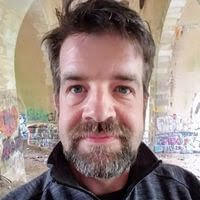Ok. We’re 50 days in. That was fast.

While the tools described in previous posts are starting to work much like we hoped, we’re also frequently pausing to consider exactly why we are doing what we are doing, and fine tuning the tools accordingly. That’s important.
Let’s talk about the roots. In previous posts, I have described some of what you would see if you walked into our school. (And so far, that is pretty much what our school looks like!) But now let’s talk about what is underneath – the philosophy that determines what our school looks like. Adjusting the tools we use every week so they actually express these roots with our students has been the center of the work so far in our new school.
It all starts with trust.
Agile Learning Communities call its core principles “roots”, from which our school grows. The soil that everything grows from is trust. First and foremost, we trust the students – trust them when they say what they need, trust them to take care of themselves and each other and the community, trust them to encounter real problems and figure out how to solve them, trust them to ask for help when they need it. The students also trust the facilitators to hold the space and keep everyone safe. And the parents trust their children, and the school. The trust is what allows everything else to work. No small feat. Trust is what allows the roots to take hold.

The roots of our philosophy are so simple and obvious on the one hand, and yet compared to how traditional school operates, they are profound.
The first root is the idea that learning is natural – that it is happening all the time. If we imagine what learning “looks like”, I wonder how many of us would describe a classroom, with a teacher in front, and students at desks soaking up knowledge. And while sure, some learning can happen that way, in fact the learning does not start when we arrive at class and stop when the bell rings. We are learning all the time. It never stops. You can’t stop learning. As long as you are alive and conscious, you are learning something.
Learning is not a faucet that is turned on and off. It is a waterfall. Abundant. Ceaseless.
The second root is that idea that people learn best when they are free to make their own decisions. People learn best when they are free and able to direct their own attention, and we can’t practice or learn that if someone else is always telling us what to be interested in. People learn best when they are able to encounter a problem and choose themselves how to go about solving it. Not only do they learn more – they are also happier and more productive.

Autonomy. Self Direction. Freedom. These are good things for all people, and children are people!
The third root is the idea that people learn more from their environment than from the content being taught. In a traditional classroom, where a student is sitting learning math, but they have not chosen themselves to be there and would rather be playing or talking to their friend, they might receive the math lesson, but they will also the message loud and clear that what matters to them does not matter and that they cannot be trusted to choose to spend their own time. Like we said, learning is happening all the time, and a student will not only learn content but will learn all the lessons sewed up in the environment they are in. More important than finding the right content to share with students, it’s finding the right environment. When we are talking about supporting the whole person, it’s not about the curriculum, it’s about the environment and the community.
The medium is the message.
The fourth root is the recognition that learning improves as we are able to learn practices of intention, reflection, creation and sharing. While the first three roots are observations on the nature of human beings and learning, the final root is about practices to cultivate. The fourth root is what makes ALC maybe different from other Self Directed Learning Environments, because it does describe some practices that we can take on that are not purely instinctual that can help sharpen the way we learn.
Learning how to learn is about learning to direct our attention where we choose.
So in the past 50 days, we have been busy fine tuning our school so that it lives up to these simple but profound ideas. Over the next 50 school days, I’ll describe some of the things we have figured out.

This blog post was originally published on the Agile Learning Centers website on November 11, 2018 and has been reprinted by permission of the author.
If you enjoyed this article and feel called to give back to ASDE, here are ways you can support our work:
- Donate money
- Share our content with others! Click one of the buttons above to easily share on Twitter, Facebook, or email.
- Consider becoming a Contributor for Tipping Points
Tipping Points Magazine amplifies the diverse voices within the Self-Directed Education movement. The views expressed in our content belong solely to the author(s). The Alliance for Self-Directed Education disclaims responsibility for any interpretation or application of the information provided. Engage in dialogue by reaching out to the author(s) directly.






